Escape from Planet 4 MOA– Part 3
This installment in the series will concentrate on what I did at the bench, both the shooting bench and my gunsmithing bench, to improve my accuracy with my deer rifles. I would like to remember that it was a gradual process that started about 2001 and ended with me bagging my first deer at 200 yards now in 2022. Let me begin with where I stood in 2001, when I got the farm
At the time I got the farm in 2001, I had two rifles that were seriously dedicated for deer hunting. One was the original Remington 742, acquired in the early 80s. The other was a Winchester Model 670. Both were in 30-06. I was shooting 165 grain Hornady Interlock Spire Point handloads. I will go more into the load data later. However, both these rifles were doing no better than pie-plate accuracy at the time, and 90% of this was due to the nut holding the rifle. I admit it.
At the Shooting Bench
What was I doing wrong?
Not all that much, really. If you’re going to take a rifle that can easily put an elk down at 300 yards and use it on a deer inside 50 yards, there is a wide margin of overkill. If I was going to improve my accuracy, it was not because the sport itself was demanding it. What irked me was the waste of ammunition I went through every year– all the blown shots, all the flyers, all the craziness.
Most of it had to do with the bench I was using and the way I was using the bench. Let me quickly slough off the years I sighted in off hay bales and rickety tables. None of that did me any good whatsoever. By 2003, I had built a fairly sturdy shooting table. It fit me just right, and if I put a boat cushion on the seat, it fit my sons. Right there was a huge step in the right direction.
Next came the rest. I had always supported my rifles with my left hand with my elbow on the table. Somehow I got it into my head I needed a better rest, and so I came up with what I thought would fix the problem. I had a scrap of wood, a 2X6 and a 2X4 nailed together to make an Ell, and I covered that with carpet. It worked tremendously better than using my left arm to prop the barrel up. It took me years, however, to add the next two steps. First, I had to stop using my left arm entirely and learn to put it under the rifle on the table and let my shoulder, right arm and the rest do the work. Second, I had to learn to stop propping the barrel on the rest and instead move the rest back and prop the forearm of the rifle. Third, I had to consistently rest the forearm in the same place each time I shot. These changes did not happen overnight. Eventually, I added a rear bag and I use my left arm to squeeze the bag and bring the crosshairs to just the right point of aim.
I breathe before I shoot and exhale through constricted lips. As I reach the bottom there is a quiet moment when it all goes still and that is when I take my shots. If things are not right, I start over.
I am still refining how I shoot at the bench. About 5 years ago, I ditched the carpeted rest and added front and rear shooting bags. These refined my aim even more. The rifle forearm was bouncing off the old carpeted rest and doing so in a random manner. Nestling the forearm on a bag deadened that jump considerably.
I learned patience at the bench. Shooting a hot barrel buys you nothing. I shoot maybe 3 shots out of a barrel before putting it down to cool off. I usually bring 3 deer rifles at a time down to the farm and shoot them alternately. I do this when I do not have anything pressing, and I can take my sweet time doing it. My sons like to shoot together and they like to bring friends down. As I mentioned previously, I don’t like a whole lot of hub-bub when I shoot, so I do not shoot seriously during these frolics. I want to feel like I have all the time in the world.
Like layers of a rotting onion, I kept peeling away decades of bad habits. A few years ago, I found myself targeting the wind. I knew I was always better at shooting in dead wind conditions, but I never knew how badly wind affected my shooting until fairly recently. My shooting bench, as I said, is up on the front porch of the house, and I can see 4 counties from there. There is nothing between me and . . . well, I guess the Mississippi River about 350 miles away. The wind gets rather fierce up there on that ridge when it is coming from the south or the southwest. It rocks me, sitting at the bench, it plays hell with bullets, fired along a roughly N/S trajectory.
The first thing I did to address this was try to do my most serious shooting early in the morning before the wind picks up. Second, built a second target stand roughly 90 degrees to the original. If the wind is up and I need to shoot, I can pull the shooting table out into the yard and fire along the E/W axis and have the bullet travel with the wind. A couple of years ago, I went about building myself some wind flags. I can now better see the swirling going on between the bench and the target. This aspect is still in its infancy, but I’ve at least learned to shoot when the flags are all pointing the same direction.
Somewhere along the way, I started thinking about Maximum Point Blank Range. That is, the maximum distance to the target where the shooter does not need to worry about elevation. I started sighting in all my deer rifles to shoot 2 inches high at 100 yards. Previously, I had always sighted-in dead on, no matter what the distance. While this did not change the size of my groups, it did resolve an issue of confidence. If you look at the tables, most of the rifles I used for deer, everything from 25-06 to 35 Whelen when sighted 2 inches high at 100 yards give you no more than 2 inches above or below the target out past 200 yards. Since my longest shot at the farm would be no more than 200-250 yards, I found that making this change allowed me to point the crosshairs where I wanted the bullet to go and the bullet would land no more than 2 inches high or low of that mark. Even with the 30-30, a 2-inch high setting gives me over 150 yards of MPBR.
I also learned that each of my deer rifles has its own way of getting itself ready for the season. Some require up to 5 shots before they settle in. Some only require one fouling shot before they start grouping nicely. Again, I take my time. I do not let myself get rushed, and after 2-3 shots, I put the rifle down, switch to another rifle for a while and then go back. A hot barrel changes the Point of Aim. Since I am always taking a deer with a cold barrel, I need it to be as close to ambient temperature as possible.
Recoil was always a bugaboo for me. My sensitivity to it varied from session to session and from season to season. What I found was that, in the field, it did not really matter, but at the bench, the bigger chamberings like my 35 Whelen were not as much fun to shoot. Sometimes I had to fight a flinch. After 10 good years of pulling down does in the late season I retired my Rem 7600, the Whelenizer. It just was not doing any better job than my 30-06s. Some year soon, I am going to bring it back online with a steeply downloaded 180 grain bullet so that it will shoot more like a hot 35 Remington. I like the rifle. Its added power, at least for whitetails, was just not needed.
At the Gunsmithing Bench
Just like with the shooting bench, the other side of this began with actually making myself a bench to work on. For 25 years, I did everything from work in my easy chair to working at the kitchen table. I finally built myself a bench out of scrap wood, and at still is doing me well after decades of service.
Next on the list came the gun vise. I use a repurposed varmint rest to lock my rifles in before I work on them. It makes for a lot less hassle and it makes tasks like bore-sighting much easier.
About 15 years ago, I acquired a bore-sighter. This is not a laser. It is the old-fashioned optical sighter with arbors that you go down the barrel. It throws a pattern onto the scope picture and you play with the crosshairs of the scope until everything lines up. Viola! (how did she get in here?) I’m bore-sighted. What this did for me was allow me to mount my own scopes, get them fairly well adjusted at home, and then take them to the farm and fire them at 100-yard targets and be usually on the paper with the first round.
So what did I do with my bore-sighter? Well first thing I did was get rid of all the goofy see-thru mounts that remained on any of my rifles. The next thing I did was get rid of the Weaver Swivel mounts. I used to be a big fan of swivel mounts. It let you move the scope out of the way for shot with the irons. The problem was that they were not rock solid. When I got down to seriously escaping Planet 4 MOA, they had to go. The final blow came in 2008 when I missed a close-in chip shot at an 8-point buck, because I’d had somehow knocked the swivel mount on my Savage 99 without knowing it.
The next few years, I also went through and concentrated on my cheek welds. In some cases, it meant removing thick recoil pads. In one case, it meant adding a cheek pad to my Savage 99. I found that if I had a consistent cheek weld, shot to shot and session to session, I had a better chance of hitting consistently. I do not know your status vis-a-vis Planet 4 MOA, but if you doubt me, take your deer rifle and peer through the scope and watch how the target moves around in front of the crosshairs as you move your head around.
Within the past decade, I made a point of ridding myself of all the old rifle scopes that had accumulated on my rifles. Some I purchased up to 40 years ago. Some came with the rifles when I bought them. While I cannot say any scope really wrecked my group, I had all sorts of niggling problems with making adjustments from year to year. Some scopes were not consistent in their adjustments. Two clicks up and two clicks back down did not get me back to the same spot. I now have Bushnell Banner 3-9X40mm scopes on most of my rifles. They were not all that expensive. Indeed, they cost less than $100 apiece. However, they were 2-3 times the cost of what they were replacing. I usually sight in with a load and then leave it. I also do not run hundreds of rounds through each rifle. I chose what worked, not necessarily the absolute best.
To improve the accuracy of my rifles, I made a few adjustments. Most of my rifles are free-floated. In some cases, that meant hogging out the barrel channel with some 60-grit sandpaper and a dowel. In a few cases, I bedded the rifle using epoxy. In reality, none of the rifles I continue to shoot from back in the old days were really only 4 MOA shooters. I was just a 4 MOA shooter myself. Doing little things to them, like bedding, freeing up the barrel channel, and providing proper tension with a torque wrench to the action screws brought 2 MOA rifles down to 1 MOA or better.
Somewhere along the way, I learned not to clean my barrels. Wait! What? That’s right. I had come of age as a deer hunter believing it was sacrilege to go to bed with a dirty rifle barrel. However, I found out several things. First off, most rifles shoot differently from freshly cleaned to having a few rounds run through them. Secondly, I had a couple of rifles that really did not settle down and shoot respectable groups until I had run at least 5 rounds through them. Third, after switching to Ed’s Red as a bore solvent, I found that the solution worked wonders over time lifting off deposits. I could clean a bore down to a clean patch in December, leave it on the rack until the next summer with some Ed’s Red in it and find carbon deposits coming out the first clean of the summer. As a result of all this, I adopted the habit of cleaning my barrels before I start shooting them in the summer. After that, I only clean the outside and the inside of the receiver until the end of deer season and then do a 2-session deep clean before putting the rifle to bed for the winter. As a result, I don’t have to guess where that first round is going on the Opener.
Most of my deer rifles have been treated with Dyna-Bore Coat. It has gone a long way to improving groups in that it prevents the buildup of copper fouling and keeps crud from building up in the grooves. My rifles all require less cleaning than they did.
This post has already been read 2208 times!
Views: 12
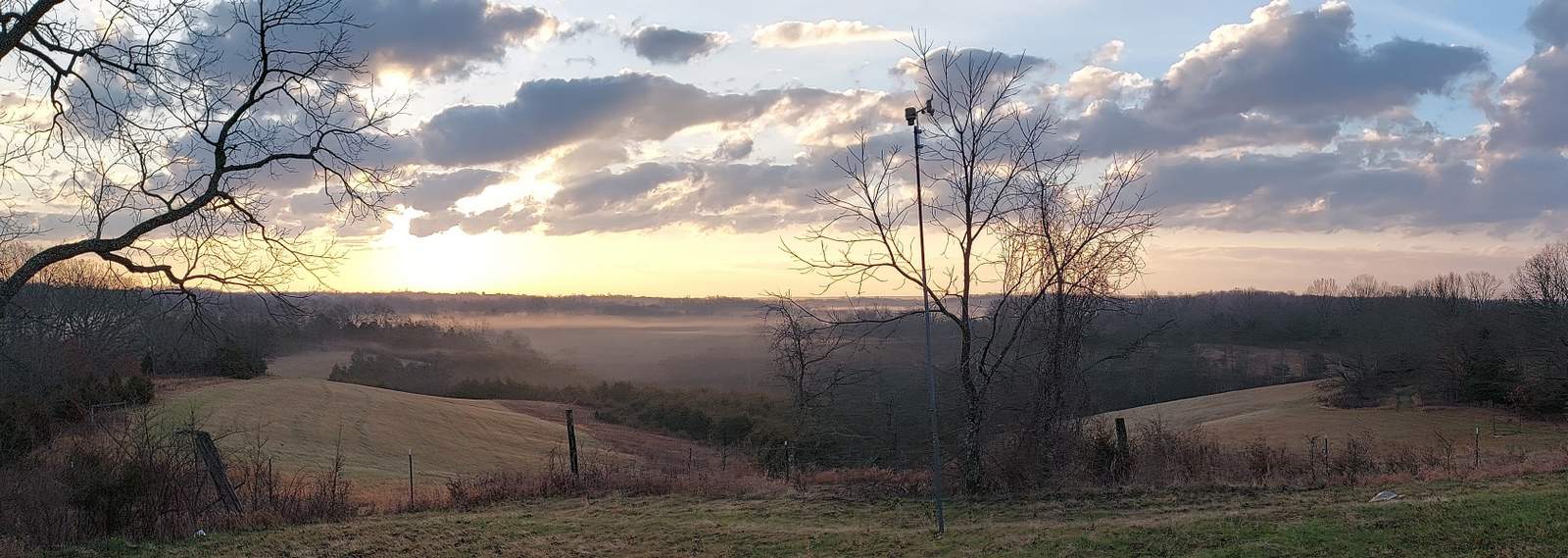


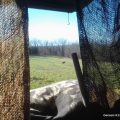
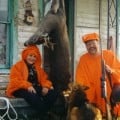
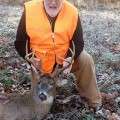
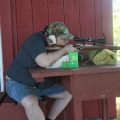
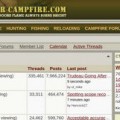

Great stuff! Keep it coming.